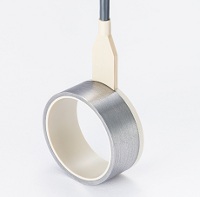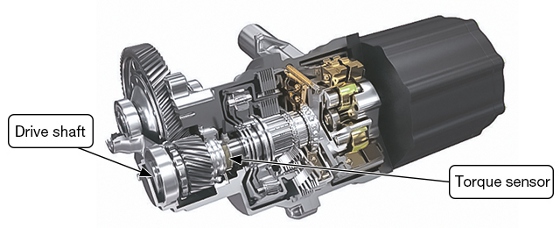 |
| September 01, 2020 | Volume 16 Issue 33 |
Designfax weekly eMagazine
Archives
Partners
Manufacturing Center
Product Spotlight
Modern Applications News
Metalworking Ideas For
Today's Job Shops
Tooling and Production
Strategies for large
metalworking plants
NSK develops world's first non-contact torque sensor for motor vehicle drive shafts

NSK non-contact torque sensor for drive shafts in motor vehicles.
NSK has developed a non-contact torque sensor capable of measuring the torque of drive shafts in real time. The technology is the first sensor in the world with this capability.
Measuring torque at the drive shaft provides vital information that can be used to increase fuel economy, improve comfort and safety, reduce environmental impact, and even detect abnormalities or malfunctions in the vehicle.
The sensor uses magnetic fields to detect torque by measuring the minute twisting of the drive shaft that occurs naturally as it is rotated by the motor. Conventional torque sensors have been too large, complicated, or expensive for wide-scale use, but NSK's new technology makes it possible to have a simple structure in a compact sensor that is ideal for mass production and broad adoption by automakers.

Among the meany attributes of the new sensor is its high reliability, because no friction occurs between the sensor and the shaft. Another positive feature is its size and construction. NSK engineers have created a very thin sensor unit with improved sensitivity by using a special method of wrapping the sensor coil and employing an optimized material. A third highlight is the sensor's ease of application. It requires no grooves, coatings, or other special processing of the shaft, and it only requires shaft materials and basic surface-processing methods that have a history of use in mass-production car models.

NSK says the new sensor technology can benefit both electric- and gasoline-powered vehicles. In electric vehicle (EV) applications, for example, pairing an electric motor with a two-speed transmission is gaining traction as an effective method to deliver increased efficiency. NSK says its new torque sensor "can help deliver shock-free gear shifting, enabling the use of a larger step ratio to deliver 7% increased fuel economy," based on in-house simulations.
In belt-driven CVT systems, data from NSK's torque sensor can help to adjust and reduce the hydraulic clamping force applied to the belt to the minimum required, "thereby reducing transmission loss for a 1.05% increase in fuel economy," based on actual in-vehicle WLTC test results.
The torque sensor can be used to achieve a super smooth and pleasant ride through advanced control that softens fluctuations in torque when changing gears and accelerating/decelerating. Also, by continuously monitoring and tracking torque, it makes it possible to predict and identify issues and abnormalities in the vehicle at an early stage before they develop into larger problems.
Lastly, NSK says that as always-online vehicles become the norm, the data gathered by the sensor can be used to identify collective road usage patterns, among other connected vehicle data.
Source: NSK Americas
Published September 2020
Rate this article
View our terms of use and privacy policy
